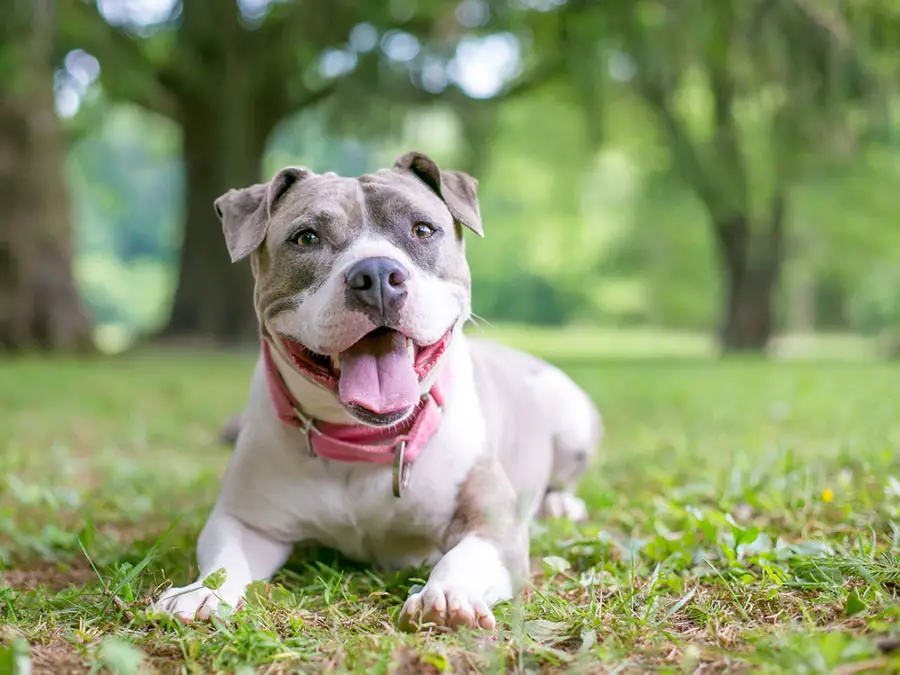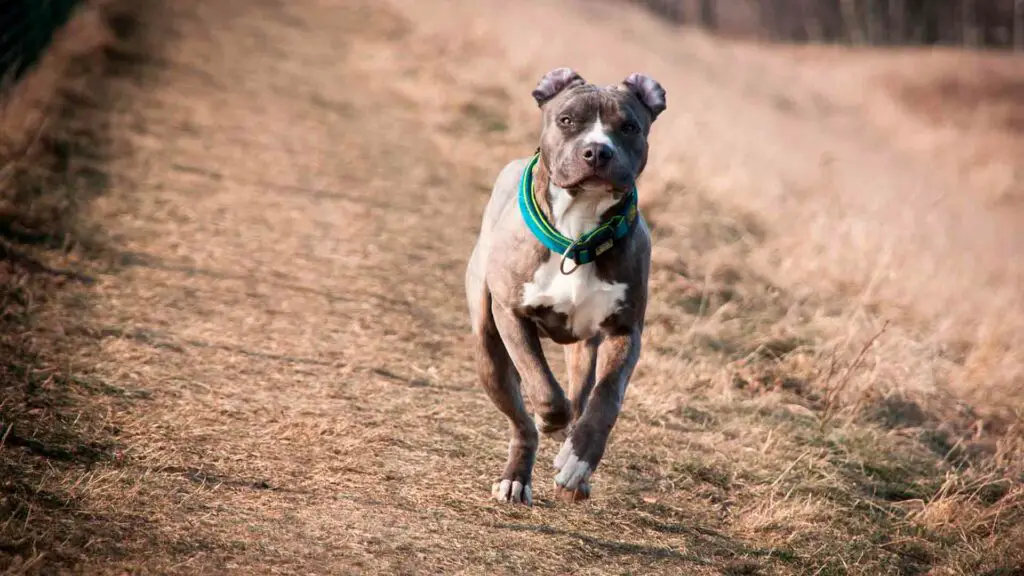Step 1: Maintain a consistent meal schedule
Food is what drives dogs (and people) to be better behaved. So why not start there? Offer your Staffie puppy three meals a day. Keeping a consistent meal schedule will help you figure out when it is time for a bathroom break. You can also set up an alarm to remember when it is time for your pup to eat.
Step 2: Take walks in the mornings
As soon as you wake up (and before your morning coffee), be sure to take your furry pet out for a walk every day. Establishing a routine will help your Staffie adjust to your schedule. You won’t have to worry about any accidents during the night or at random times. After the morning walk, it would be a good idea to take your pup out every half hour or hour. These frequent bathroom breaks are necessary. At this age, puppies are not yet capable of controlling their bladders well the same way as adult dogs. The bathroom schedule may vary every day as it will depend on the time of the first potty break.
Step 3: Go to familiar places
It’s always best to stick to a routine. Make it a habit of going to the same place every day. Your dog will eventually recognize the spot is for doing business only. Consistency is important here. Whenever you go out, your brilliant little pooch will do the math and realize that it’s time for potty. Remember to stay with your Staffie during these critical bathroom breaks. This is recommended only during the first few days of training. You want to avoid any distractions as this will only delay the completion of this crucial task.
Step 4: Avoid punishment for accidents
If your bundle of joy has an accident in the house (and this may happen at any time during training), the worst thing you can do is punish your pup. That is a no-no! Failing to recognize the signs is not your dog’s fault but your own. It would be wrong to punish your pet for this common mistake. If you do discipline your Staffie, it will be much harder for your companion to trust you. And if your punishment causes it to be afraid of you, then training will become almost impossible. Yikes!
Be mindful that shouting will not make your puppy aware of what it did wrong. Clapping your hands and staying calm would actually be more effective. This will show your Staffie that it did something bad. Take the cleaned-up mess outside with your dog to show where it is okay to do this. Eventually, your pup will learn. You just need to be patient.
Step 5: Add more bathroom breaks
A minimum of six bathroom breaks is necessary at the beginning of training. It will allow your furball to become familiar with the routine. In turn, this will speed up training. Once your Staffie gets the hang of it, these frequent breaks will no longer be needed.






